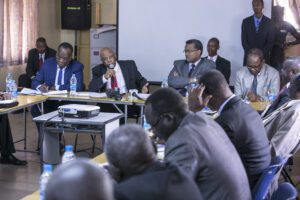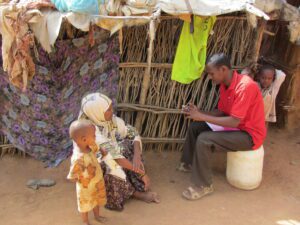Monitoring and Evaluation (M&E) case studies in Uganda provide powerful lessons on building accountability, enhancing service delivery, and promoting data-driven decision‑making. From grassroots community forums to national health programs, these real‑world examples demonstrate how well‑designed M&E systems can transform development outcomes, foster transparency, and ensure funds reach intended beneficiaries. In this post, we explore key M&E case studies in Uganda, uncover best practices, and offer insights for practitioners seeking to replicate success.
Why M&E Case Studies in Uganda Matter
Uganda has been a frontrunner in institutionalizing M&E within government, NGOs, and the private sector. The nation’s journey—from the National Integrated Monitoring and Evaluation Strategy in 2006 to the National Evaluation Plan in 2023—highlights a deliberate push toward evidence‑based governance. These M&E case studies in Uganda showcase how diverse stakeholders leverage evaluation data to refine programs, optimize resources, and build public trust.1
Key benefits illustrated by these M&E case studies in Uganda include:
- Enhanced Accountability: Citizens hold local leaders accountable through structured forums.
- Improved Program Design: Data‑driven insights inform policy adjustments and resource allocation.
- Sustained Impact: Continuous feedback loops strengthen service delivery and community ownership.
1. Government‑Led Innovations
The Baraza Initiative: Citizen‑Led Accountability
A landmark among M&E case studies in Uganda is the Baraza Initiative, launched in 2009. These community forums, chaired by Resident District Commissioners, bring technical officers and local politicians face‑to‑face with citizens, who demand explanations on public spending and service delivery. Through the CLEAR model (Can do, Like to, Enabled to, Asked to, Responded to), Barazas have led to immediate improvements such as completing stalled infrastructure projects and reallocating budgets to community‑priority sectors.2
Key takeaways:
- Embedding citizen feedback mechanisms can democratize evaluation.
- Decentralized forums increase transparency at the grassroots level.
- Structured agendas and training manuals are essential for consistency.
National Evaluation Plan (NEP) 2023
Building on decades of progress, Uganda’s National Evaluation Plan formalizes evaluation of all major government programs under NDP III. Developed in partnership with CLEAR‑AA and UNICEF Uganda, the NEP injects rigorous needs assessments, standardized methodologies, and clear accountability lines into public sector M&E. As one of the few African countries with a dedicated evaluation plan, Uganda sets a global example.3
M&E case studies in Uganda around the NEP reveal how strategic international partnerships can elevate national evaluation capacity, ensuring evidence informs policy formulation.
2. Sector‑Specific Successes
Health: Ministry of Health Strategic Plan
The Ministry of Health’s M&E framework underpins Uganda’s drive toward Universal Health Coverage. Utilizing DHIS2 for timely facility reporting, the ministry increased HMIS timeliness from 85% to 98% between 2014 and 2020.4 Annual Health Sector Performance Reports guide resource mobilization, operational research, and policy advocacy, illustrating the power of centralized data systems in sectoral M&E.
Humanitarian Aid: Uganda Red Cross Society (URCS)
The URCS deployed a mixed‑methods M&E system, combining logical frameworks, indicator manuals, surveys, and focus groups. A dedicated M&E champion and clear policies drove improved service delivery in Eastern Uganda. An impact evaluation linked robust M&E methods directly to organizational performance, offering a replicable model for other NGOs.5
Education & Child Protection: USAID LARA Program
The LARA evaluation used a three‑arm Randomized Controlled Trial and qualitative protocols to gauge early‑grade reading improvements and school safety. Although reading gains were modest, the rigorous design yielded nuanced insights, underscoring that M&E case studies in Uganda often reveal complexities rather than one‑size‑fits‑all solutions.7
Results‑Based Financing: Reproductive Health Vouchers
In Western Uganda, a voucher scheme for maternal health services demonstrated M&E’s ability to link interventions and outcomes directly. Evaluators tracked reductions in maternal and infant mortality, showcasing how targeted financing models can be rigorously assessed through well‑defined indicators.8
3. NGO & Private Sector Contributions
Role of M&E Consultants
Firms like Houston Executive Consulting and Steadman Global provide end‑to‑end M&E services—needs assessments, baseline surveys, impact evaluations, and capacity building. Their adoption of mobile data tools and sensor technologies highlights how private actors drive innovation among M&E case studies in Uganda.9
Strengthening NGO Proposals
Integrating SMART KPIs and logical frameworks into project proposals has become standard practice. The Uganda Evaluation Association (UEA) furthers professionalization by hosting training and networks, ensuring NGOs submit data‑driven, credible bids.12
4. Foundational Frameworks & Methodologies
Key M&E Frameworks
Across M&E case studies in Uganda, teams employ a tapestry of frameworks:
- Logical Frameworks for planning and tracking inputs to impacts.
- Results Frameworks aligning outputs to national development goals.
- Theory of Change mapping causal pathways.
The consistent use of these tools fosters comparability and collective learning.1
Data Collection & Indicators
Mixed‑methods—including surveys, interviews, FGDs, and classroom observations—ensure depth and breadth of insights. Establishing SMART indicators and baselines is critical: NGOs and government units alike see improved decision‑making when data is systematically tracked from day one.11
5. Digital Transformation in M&E
Digital tools have revolutionized several M&E case studies in Uganda:
| Tool Category | Example | Function |
|---|---|---|
| Data Collection | KoBoToolbox | Offline mobile surveys |
| Statistical Analysis | STATA | Advanced quantitative analysis |
| Health Reporting | DHIS2 | National HMIS integration |
| Visualization | Power BI | Interactive dashboards and forecasts |
The shift from paper to mobile reporting has improved data timeliness, quality, and cost‑efficiency, especially in rural areas.14
6. Best Practices & Lessons Learned
Across all M&E case studies in Uganda, certain success factors emerge:
- Stakeholder Engagement: Involve communities and decision makers from design to dissemination.
- Capacity Building: Invest in continuous training for evaluators and data managers.
- Standardization: Use national frameworks to align disparate evaluations.
- Technology Adoption: Leverage offline‑capable tools for real‑time data.
- Ethical Considerations: Prioritize data privacy and informed consent, especially in vulnerable populations.
Conclusion: Charting the Future of M&E in Uganda
M&E case studies in Uganda chart a remarkable evolution—from participatory citizen forums to digital HMIS systems. They underscore that effective evaluation is as much about process and people as it is about data and tools. By embracing lessons from these M&E case studies in Uganda, practitioners can design robust systems that drive accountability, learning, and sustainable impact.
Learn more about Uganda’s evaluation community: Uganda Evaluation Association






